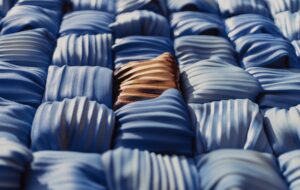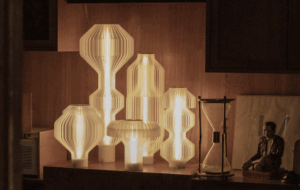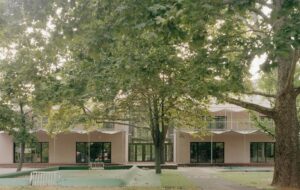|
|
||
|
Snaking around a hilltop in San Francisco is the new UCSF Institute for Regeneration Medicine, a set of laboratories designed by Rafael Viñoly Architects. “Regeneration medicine” is in fact a euphemism for stem cell research, the cutting-edge field of study that is both one of the most promising in all of medicine and the source of a great deal of controversy in the USA, regarding the point at which human cells – its primary research material – become human beings. The building itself has been shoehorned into an extremely awkward position. “It was very, very difficult,” says Viñoly. “Essentially there is no site!” On a mountain-side hemmed in by a road to the south and the existing campus to the north, all set in the earthquake-prone Californian landscape, the client’s initial vision of the project was a stacked tower of labs, although Viñoly thought that the users deserved a better solution. “The kind of work that occurs in this cutting-edge environment depends a lot on interactivity. It occurs a lot better if you have a pedestrian condition.”
So instead of a tower, the building became a gently rising series of labs interspersed with communal spaces, all articulated from a circulation spine. The whole building is dramatically cantilevered out from the hillside on a field of steel columns designed to absorb seismic loads. This dramatic gesture is further accentuated by the elevated walkways that bring the researchers to work via the nearest building, the vertiginously poised external circulation route, as well as the exhilarating views out over the city from the labs and roof gardens. Laboratory buildings are not generally supposed to be this exciting and it’s obvious that Viñoly has relished the opportunity to provide the researchers with something to be proud of. “These people have come from a tradition of being in buildings that are more like kitchen areas than real spaces that contribute to the work!” Although the building is obviously not lavish – healthcare budgets being what they are – this facility can be seen as an ennobling structure for the often unseen workers on the cutting edge of biological technology. “What has been happening over the last 15-20 years in life sciences is perhaps the most interesting human pursuit that you can imagine,” says Viñoly. “They are the only people that are truly delivering, you know?”
|
Image Bruce Damonte
Words Douglas Murphy |
|
|
||


















